The lava flows from South East Crater on 24. February 1999The pictures on this page link to larger photos (usually 20 to 60K). As all pictures where taken on 24. February 1999, no dates are given
below. All times are local and approximate (+/- 30 mins). In order to give an idea of the perspective, focal lengths of the camera lenses
are given (e.g. f=28 mm: wide angle lens). These lava flows started during the great eruption of SEC on 4. February 1999. Below is a
report which illustrates some of Marco's experiences. |
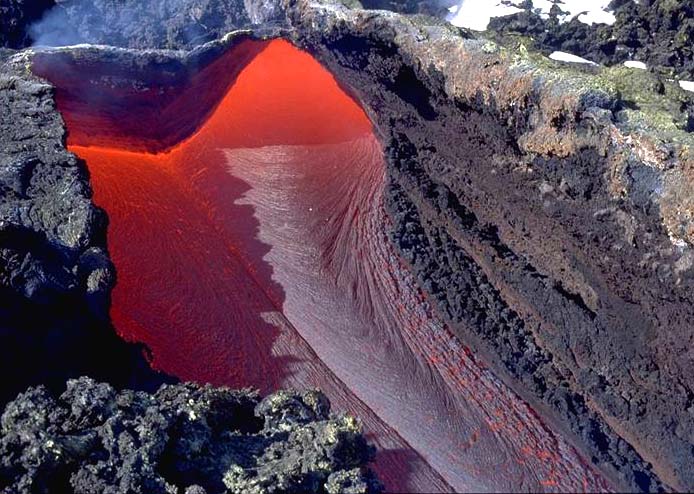 14:00, f=50 mm, from the lava bridge. The main lava channel before the bridge. Two pahoehoe flows exit from lava tubes forming the main flow which is 3 m wide. | 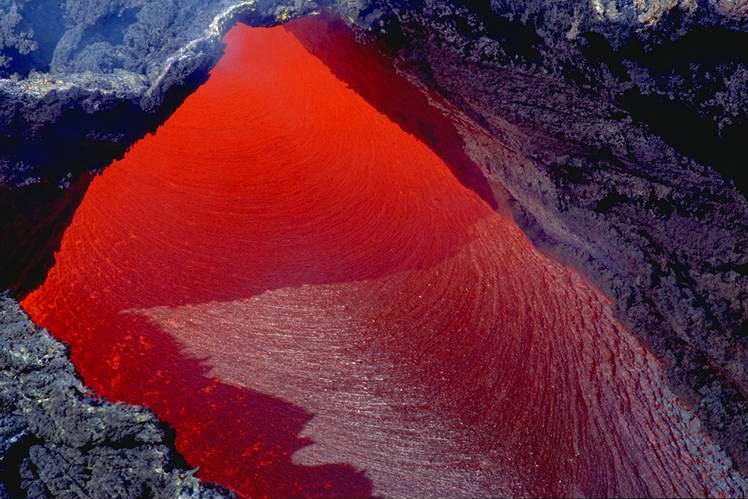 14:00, f=135 mm, from the lava bridge. Main channel before the bridge. Close-up of a pahoehoe flow. The bending of lava ropes due to higher flow velocity in the center is well visible. | 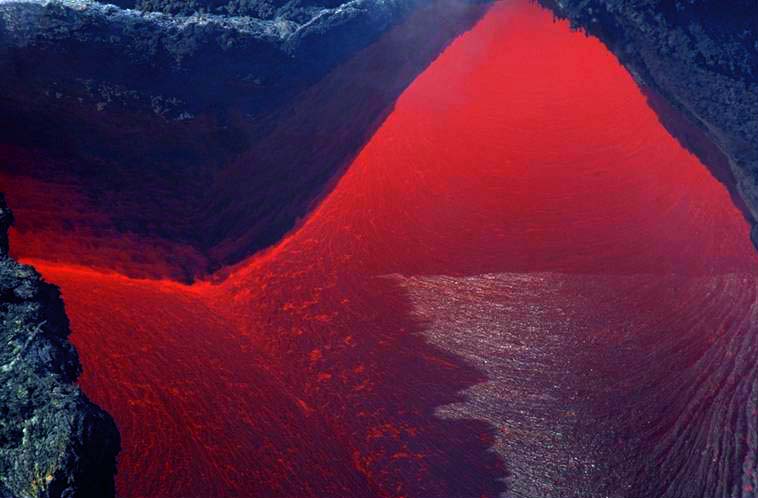 14:00, f=135 mm, from the lava bridge. Lava stalactites can be seen in the right tube and partially in the left tube. | 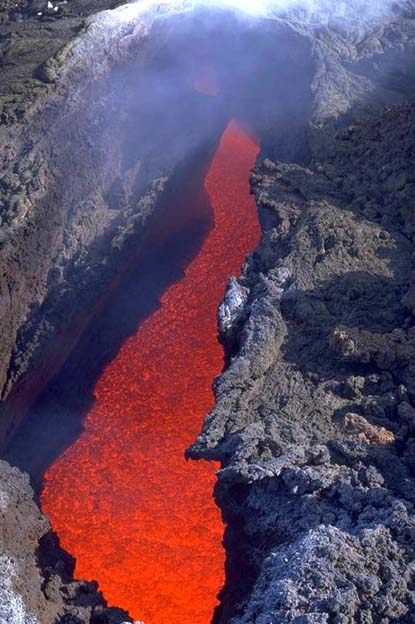 14:00, f=50 mm, from the lava bridge. The lava transforms into an aa flow 3 m wide and enters into another tube at about 2m/s. Strong, hissing degassing took place through the hole in the tubes roof. |
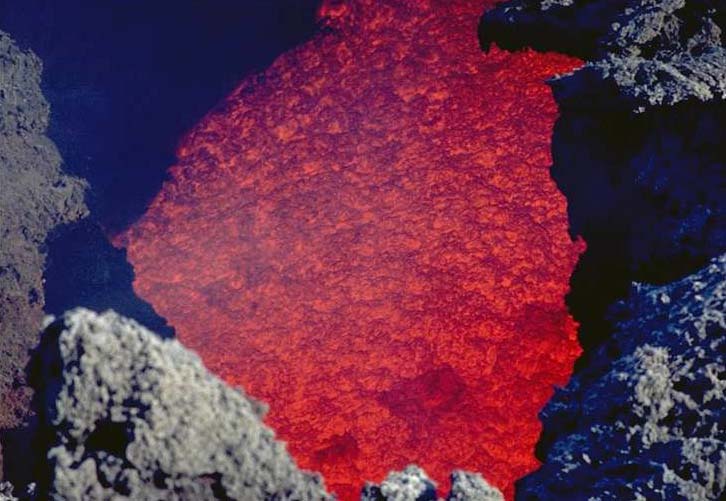 14:00, f=135 mm, from the lava bridge. Main lava channel after the lava bridge. Close-up of the aa lava flow just below the bridge. | 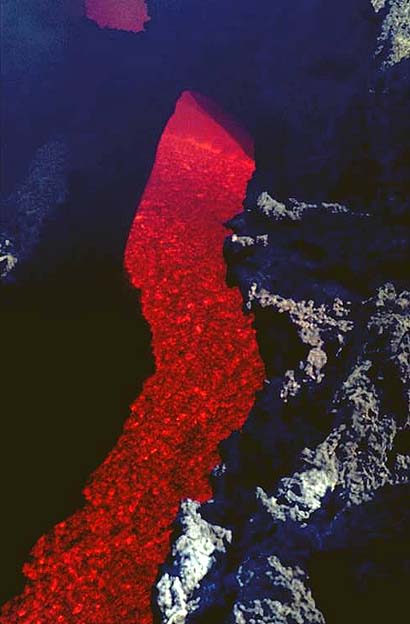 14:00, f=135 mm, from the lava bridge. Main channel after the lava bridge. Close-up of the left turn of the flow entering in the 3 m wide tube. Note the shoreline inside the tube. | 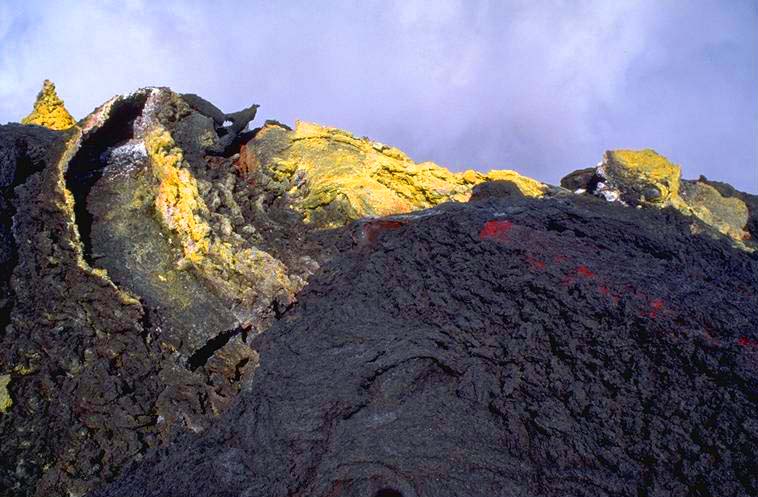 15:00, f=28 mm, from the lava field about 200 m NW of main channel. From left to right: Degassing hornito covered in sulfur deposits, empty lava tube on a less steep hornito, and active ephemeral vent releasing a red flow towards the right. | 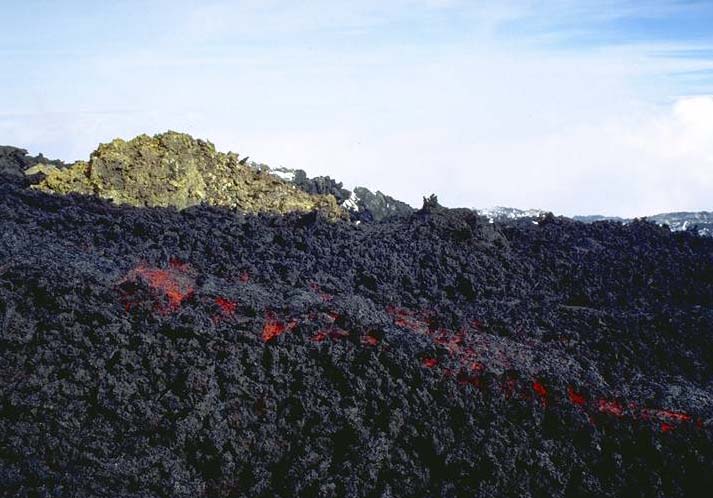 15:00, f=28 mm, from the lava field. Lava field about 200 m NW of the main channel. The active ephemeral pahoehoe flow going towards the right at a speed of 0.1 m/s, seen from a distance of 2 m. |
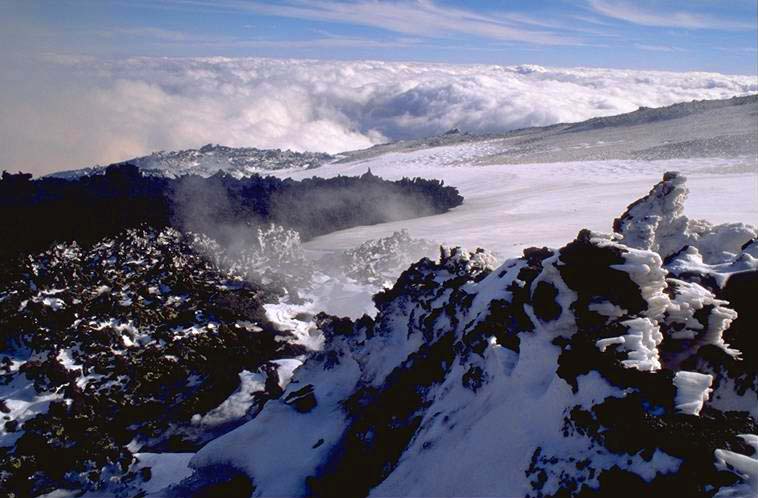 15:00, f=28 mm. The active flow covers perfectly white, fresh snow with totally black lava. In the right foreground, rime deposited during a recent snow storm covers older lava. In the back a cloud deck covers the Ionian Sea. | 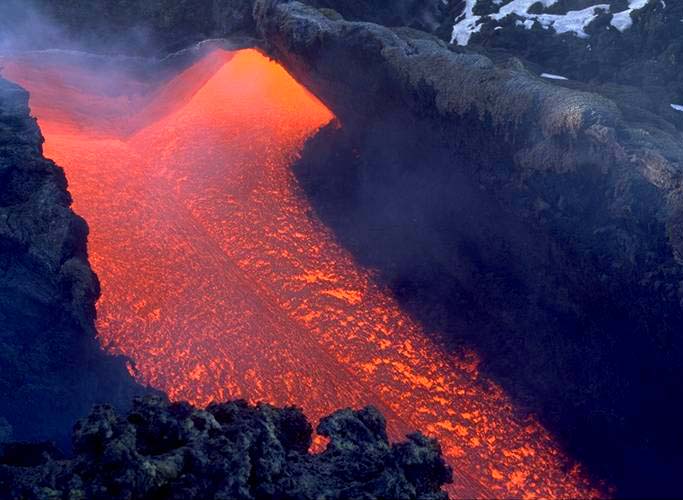 17:00, f=50 mm, from the lava bridge. The main channel before the bridge. Two pahoehoe flows exit from two lava tubes and then join to form the main flow approximately 3 m wide. | 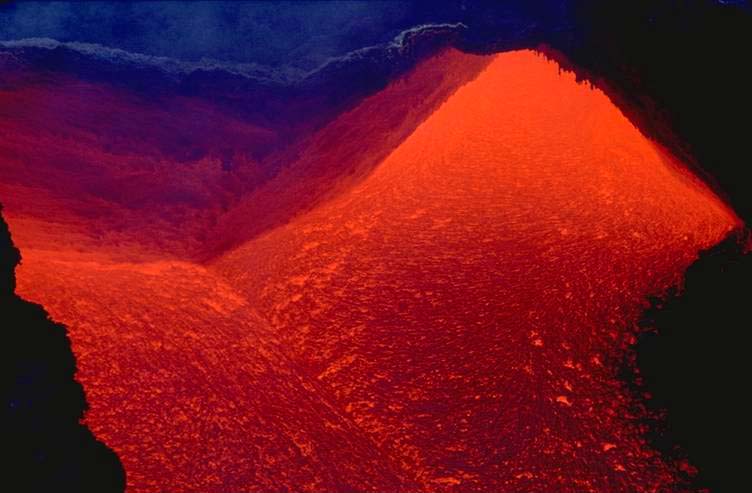 17:00, f=135 mm, from the lava bridge. Main channel before the bridge. Close-up of the pahoehoe flows exiting from their lava tubes, with lava stalactites in both tubes. | 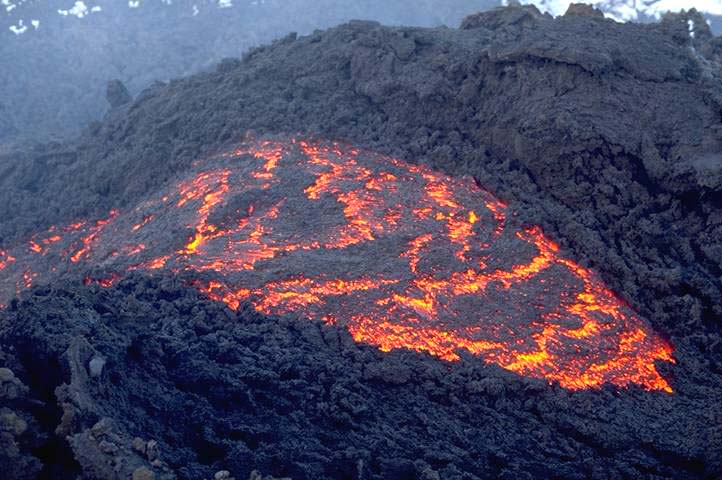 17:00, f=50 mm, from the lava field about 50 m SE of the main channel. Another ephemeral vent 2m wide releases a lava cascade flowing at 0.1 m/s. |
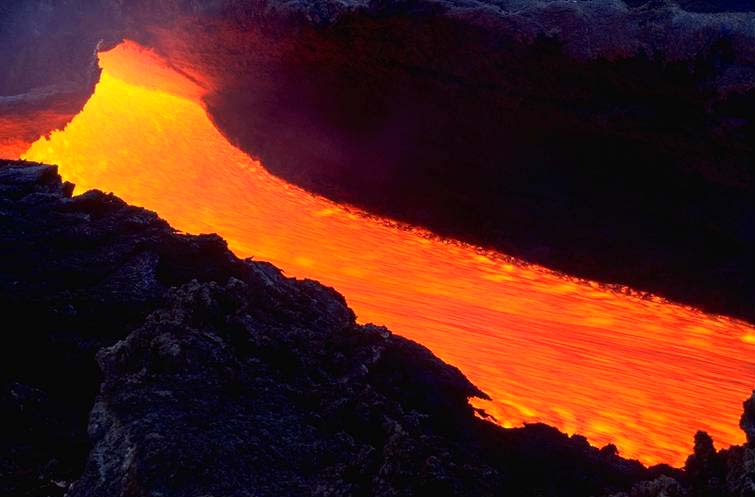 18:00, f=50 mm. The main lava channel before the bridge. The motion of the lava flow is noticeable in this 1/4 sec-exposure. | 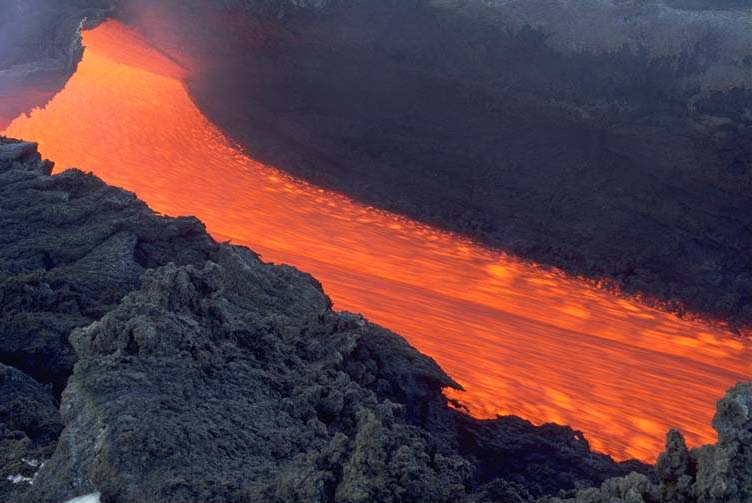 18:00, f=50 mm. Similar view to the one on the left. | 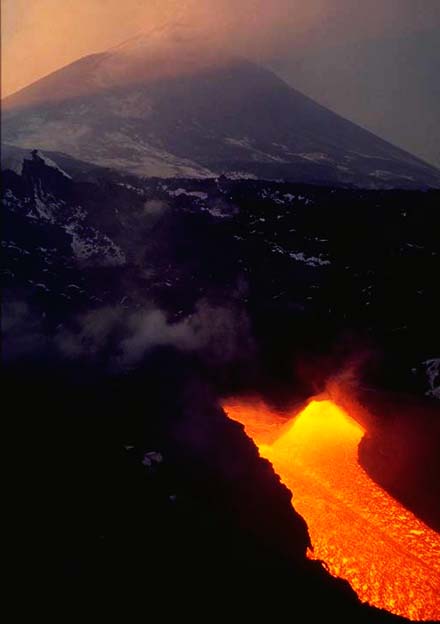 18:00, f=28 mm, from the lava bridge. Majestic SEC in the last sunlight. Smoke from the new fissure and from the degassing of the active flow. | 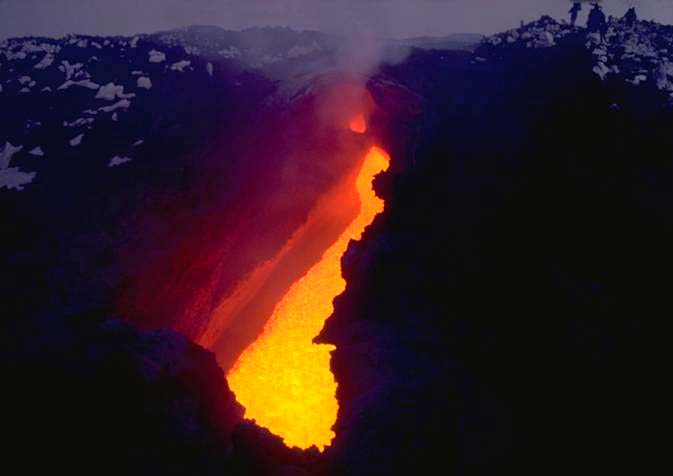 18:00, f=28 mm, from the lava bridge. Main channel after the lava bridge. A TV crew is working in the right background. |
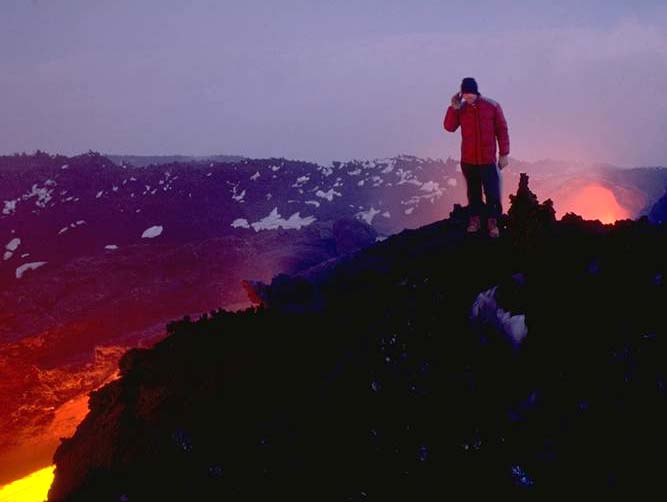 18:00, f=28 mm, from the lava field. Bruno Hermier on the lava bridge. | 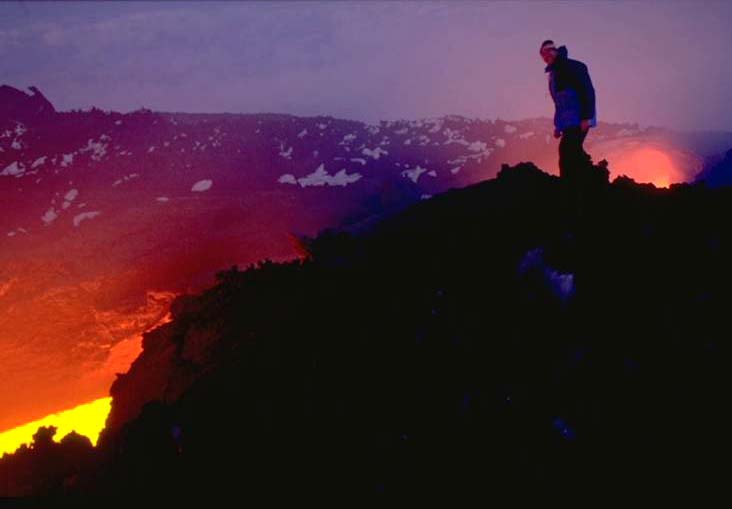 18:00, f=28 mm. Marco Fulle on the lava bridge. Fresh snow is only a few meters from 1000 °C lava ! | 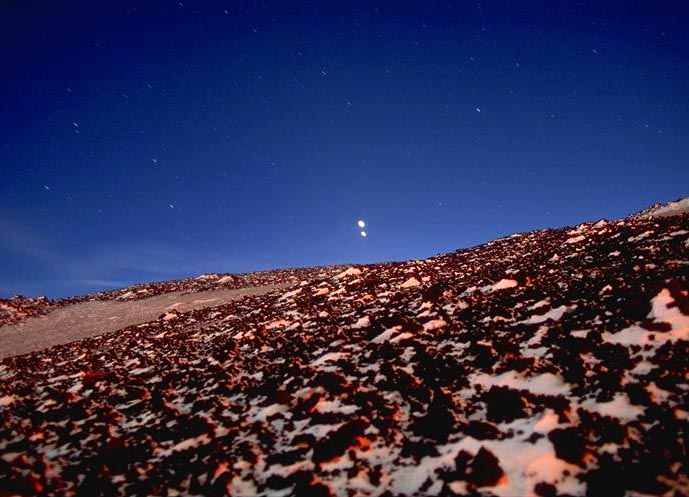 19:00, f=28 mm. Conjunction of Jupiter with Venus as seen from «Mars»! Lava flows behind the camera illuminate the snow creating this «alien» landscape. Cetus (whale) left, Pisces above and Aquarius right of the two planets. | 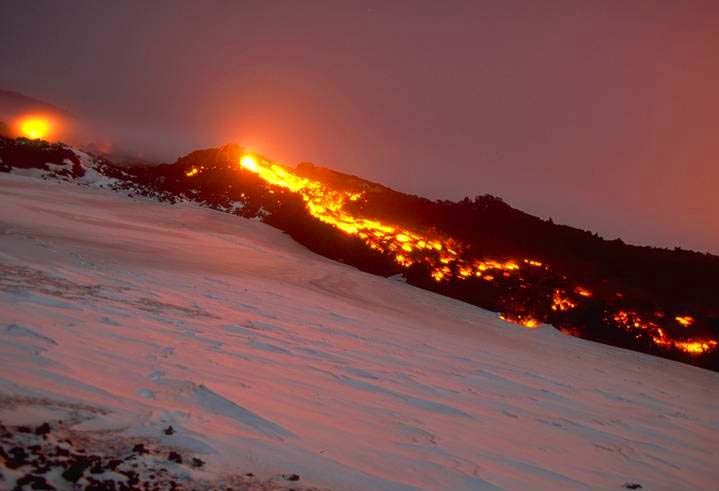 19:00, f=28 mm. Lava field about 200 m NW of the main lava channel. Note the interaction of lava and snow creating the illusion of burning snow.The fresh snow is illuminated by the moon (blue colour, note footprints) and by lava. |
The lava flow in March 1999
Report by Marco Fulle
I arrived at Sapienza on Monday 22 February. The wind was so strong that the cableway had stopped. I went up on foot, but before
reaching the Montagnola wind gusts of up of 150 km/h threw me to the ground twice. After an hour of fighting I was forced to return.
The wind increased even more during the night, and on the 23rd snowfall started. The temperature at Sapienza dropped from -5 °C at noon
to -10 °C um 19:00 (cableway thermometer). There was a strong snow storm with visibility down to 50 m and wind speeds up to 150 km/h.
I was most depressed, having given up hopes of going up and not being sure when I would be able to travel home. In the morning of the
24th everything was white, but at 9am the wind dropped and the first cars arrived. The road was cleared in half an hour (Swiss
organisation in Sicily!). On the top the fresh snow was carried away by the remaining wind which was still blowing there.
I prepared to climb, but employees of the cableway told me that it would probably not run all the day. At the bottom station I met
Bruno Hermier, whom I had once met on Bocca Nuova in October. We waited with little hope that the cableway would, but then the miracle
happened! A group of 70 Japanese tourists arrived and the cableway started. The problem, apparently was NOT the wind...
At 11.30 we left Sapienza, at 12.00 we were at Montagnola and at 13.30 we are on the lava flow were we stayed for seven unforgettable
hours!! The spectacle of the black lava and the fresh white snow was incredible, and I had problems to decide what to record on film.
The main lava flow was impressive, since it moved at a surface speed of 2 m/s in the centre, it was 3 m wide, so that 5 cubic meters
was the minimum outflow rate. There were two paehoehoe flows exiting from two tubes, each 2 m wide. Further down they joined, then
passed below a lava bridge on which it was possible to stand for a few (no longer because of the terrible heat). After the bridge
there was some 20 m of fast aa flow which went into another tube 3 m wide with a scenic turn to the left. It is hard to imagine a nicer
lava flow. In the daytime the orange colour was impressive, and in the night the YELLOW colour was a dream.
The best was the descent along the ski slope: We left the flow at 20.00, and walking on perfectly compact and dry snow we arrived at
Sapienza without any trouble at 22.00. The moon illuminated the most wonderful landscape you can imagine! I never used the flashlight!
Jupiter and Venus were in conjunction. Only Etna is able to give you such unpredictable, fantastic views. It was wonderful, but, to
avoid the end of Policrate, I preferred to return to home the following day.
On February 25th , from the train between Acireale and Taormina, two big red lava rivers were well visible, about 2 km long, descending
over the Valle del Bove wall, but .... this is stuff for next time! |